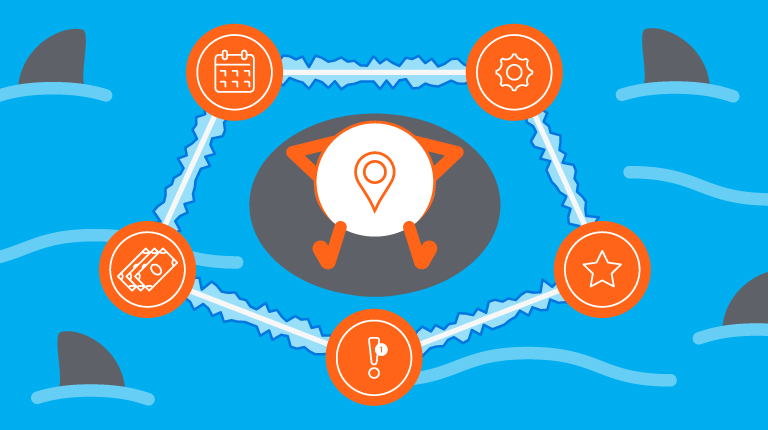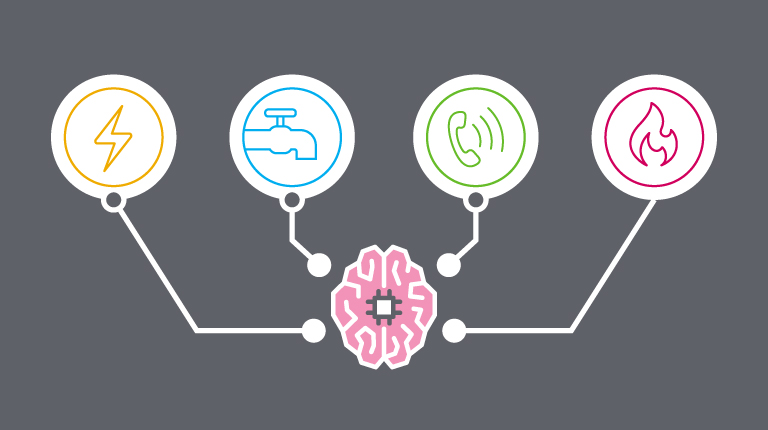Summer and Fall represent some of the busiest moving times for major metropolitan areas. Many large cities, for example, are already preparing for the ‘September 1st Shuffle’ – a frenzy of relocation that occurs as college students resettle into the city for the start of another academic year. Likewise, many families are aiming to get situated in to their new homes before their kids go back to school. For your customers, moving is a series of to-dos that can quickly snowball into an overwhelming and stressful situation. And based on personal experience, the last thing people focus on during a move is calling you to stop, start, or transfer service.
As a utilities provider, you can see patterns in the types of issues that customers contact you to resolve. Identifying similarities in customer service interactions and implementing processes that make it easy and efficient for your customers to get things done could be the difference between keeping or losing a customer – between delighting or aggravating someone at a highly frustrating and stressful time in their life.
Just like all the stressors of moving add up, the frustration points with starting or stopping utility service also accumulate. For instance, I recently bought a house. Between the closing paperwork and packing up my life, managing utilities didn’t occur to me until things got really busy. Transferring service to my new house? I figured that would easy. After all the stress and runaround with the move, I needed it to be easy. So of course, it wasn’t.
Here are three of the major service pain points I encountered during my move – and what you can do to bring the customer service experience at your utility to the next level.
Problem 1: We Can Help You With That…Eventually
When I called to stop service at my apartment for one utility, I spent about ten minutes confirming and relaying information. That’s between navigating the traditional interactive voice recognition (IVR) system and talking with a live agent. Only after all that time did I find out that my husband would have to call back to complete the transaction because the account was setup in his name. As a long-time customer of this utility, I was frustrated by the amount of time I had to spend getting to the right place, only to end the interaction with my issue left unresolved.
Problem 2: No Light At the End of the Customer Service Tunnel
When I called a different provider, it took far too long to find the right menu prompt to pause and transfer service. I was trying to think like the IVR and find the right words to route my call properly, but still lost time and ended up in the wrong queue. I quickly lost patience as I was bounced from live agent to live agent, until at one point it seemed that no one would ever be able to help with what I perceived to be a fairly straightforward task.
Problem 3: Repeating Myself. Repeating Myself.
Moving is stressful and time-consuming as it is. No one wants to waste any more time saying the same thing over and over to a machine (or a human) just to start service. Sure, it’s not as draining as reloading a moving truck, but heavy lifting is relative. And while in the middle of multitasking my move, this took far more effort than it should have. Each time I bounced from machine to live agent or from one live agent to another, I found myself relaying the same information over and over again. Shouldn’t my information have been recorded somewhere along the line?
So how do you make things more efficient and satisfying for your customers who are moving?
By offering realistic and convenient options for the day-to-day, common tasks that need to be done. Make customer interactions with your utility effortless: eliminate long wait times, the need for customers to repeat themselves, or the need to relay information that should already be stored in their account.
Luckily, improved automated customer care technology means it’s easy to provide an experience that satisfies customers and delivers cost savings for you. These days, there are even tech-driven solutions specifically created for common utility provider transactions, such as starting or stopping service.
As a practical example of this, technology such as Interactions Start/Stop Virtual Assistant turns this typically frustrating part of moving into an automated yet fully conversational experience for customers. It’s easily starting, stopping or transferring service, not getting frustrated and giving up. It’s agent deflection, not customers getting lost in a maze of prompts. It’s realizing cost savings, not customers getting stuck in repetitive loops.
We live in a world where customer loyalty is hard to come by and customers switch their utility providers as often as they change their address. So when your customers are moving and need to start or start service, it pays to make the right move with your customer care solution.
Want to learn more about how to improve customer satisfaction with automated start/stop customer care? Contact us today.




